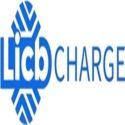Notifications

7 minutes, 19 seconds
-62 Views 0 Comments 0 Likes 0 Reviews

As electric vehicles (EVs) continue gaining popularity, the demand for fast, efficient charging infrastructure is accelerating. EV charging is typically classified into three categories: Level 1, Level 2, and Level 3—each offering different power levels, speeds, and use cases. Among them, Level 3 charging stations, also known as DC Fast Chargers (DCFCs), are the most powerful and efficient options for public and commercial environments.
Level 3 chargers can deliver power ranging from 50 kilowatts (kW) to over 500 kW, enabling rapid battery top-ups. However, it's important to note that not all EVs can utilize the highest power levels; the vehicle's onboard systems determine the actual charging rate. For example, if your EV is limited to 50 kW input, connecting to a 350 kW charger won’t speed up the charge—it will only draw what it can handle.
In this guide, we explore the technology, benefits, applications, and challenges of Level 3 chargers—and how they differ from Levels 1 and 2—to help EV drivers, property developers, and fleet operators make informed decisions.
To understand Level 3 charging, you must first grasp the difference between alternating current (AC) and direct current (DC):
AC Power: Comes from the electrical grid and powers homes and businesses.
DC Power: Is the form of electricity stored in EV batteries.
Since EV batteries store only DC power, any AC from the grid must be converted to DC before charging the battery.
Level 1 and Level 2 chargers rely on the vehicle’s onboard charger to handle this AC-to-DC conversion.
Level 3 chargers, by contrast, convert AC to DC within the charging station itself and deliver DC directly to the battery—bypassing the vehicle’s limitations and allowing for much faster charging.
| Charging Level | Voltage | Power Output | Typical Charging Time | Range Added (per 30 mins) |
|---|---|---|---|---|
| Level 1 | 120V | 1.4–1.9 kW | 8–20 hours (full charge) | 2–5 miles |
| Level 2 | 240V | 3.3–19.2 kW | 4–8 hours (full charge) | 10–30 miles |
| Level 3 (DCFC) | 480V+ | 50–500+ kW | 15–45 mins (20–80% charge) | 60–200+ miles |
Actual charging time depends on factors such as battery size, temperature, and vehicle acceptance rate.
Level 2 Charging: Typically uses a 240V circuit (e.g., clothes dryers, ovens).
Level 3 Charging: Requires a 480V three-phase power supply, commonly available in industrial or commercial settings.
Because of the high power demand, Level 3 chargers are not suitable for residential use. They are primarily found in public stations, fleet depots, rest stops, and high-traffic commercial locations.
Size & Installation: Level 3 chargers are larger and heavier than Level 2 units—some weighing over 500 lbs. Installation requires secure mounting, power upgrades, and often active cooling systems.
Connector Types:
CCS (Combined Charging System) – Widely used in North America and Europe.
CHAdeMO – An older standard, mainly used by Asian EVs (e.g., Nissan LEAF).
Tesla Supercharger – Proprietary to Tesla, though adapters are now increasingly available.
Due to their cost and complexity, Level 3 chargers are best suited for high-use environments:
Public Charging Networks: Highways, urban centers, shopping malls—supporting long-distance travel and reducing range anxiety.
Fleet Charging Hubs: Ideal for taxis, delivery vans, buses, and ride-share fleets needing rapid turnaround.
Commercial Sites: Hotels, gas stations, and retail centers can attract EV drivers by offering fast charging as an added convenience.
Note: Daily commuters and home users may not need Level 3 charging if overnight or workplace Level 2 charging is sufficient.
Installing a Level 3 charger can cost between $30,000 to over $100,000, depending on:
Site preparation
Utility upgrades
Demand charges
Network integration
Equipment and maintenance
Not all EVs can accept fast DC charging. Older or budget models may only support Level 2, making Level 3 charging ineffective for those vehicles.
High-power charging creates significant strain on the local grid. Simultaneous use of multiple chargers can:
Trigger demand charges
Require utility coordination
Influence local power quality and stability
Compared to Level 2 chargers, Level 3 stations are still relatively scarce. However, this is changing as governments and private sectors invest in EV infrastructure expansion.
Despite the challenges, Level 3 chargers offer clear advantages for businesses and fleet managers:
Quickly recharges vehicles, minimizing downtime.
Attracts EV drivers to locations like retail centers, restaurants, and service areas.
Supports corporate ESG goals and may qualify for green tax credits or carbon offset programs.
As EV battery technology evolves, fast charging will become the norm. Installing Level 3 infrastructure now ensures long-term relevance.
Level 3 charging is redefining the EV experience by slashing charging times from hours to minutes. As EV adoption grows, the demand for high-speed, accessible, and reliable charging infrastructure is becoming critical.
Though costs and technical challenges are non-trivial, the benefits—faster service, customer attraction, sustainability, and operational efficiency—are compelling, especially for commercial operators and fleets.
Investing in Level 3 chargers is not just about meeting today’s needs—it’s about preparing for an electrified future where speed, convenience, and clean energy go hand in hand.Know more about Google SEO Directory
China EV Chargers EV Charger Manufacturer EV Charging Solutions

